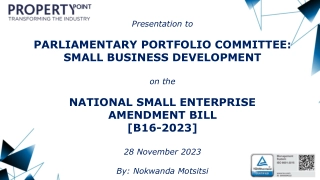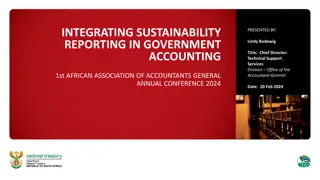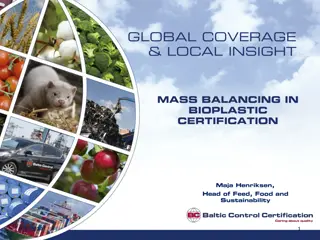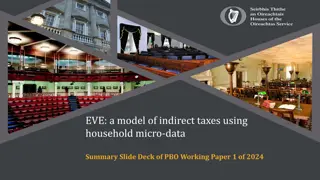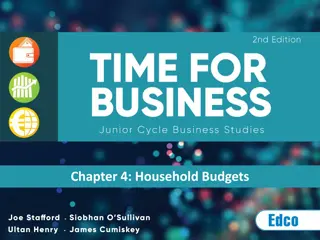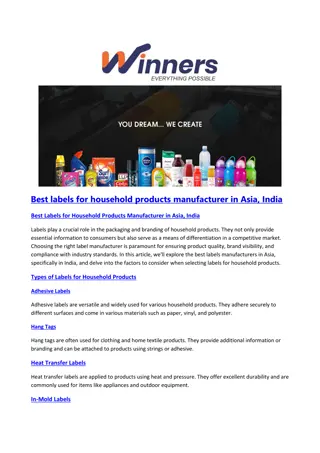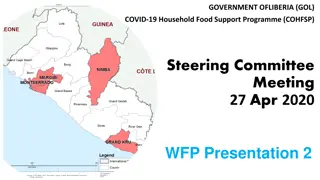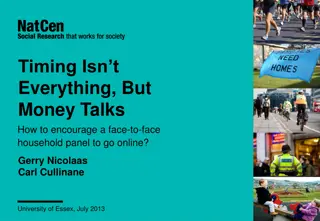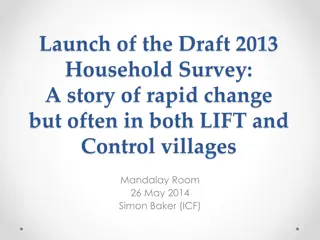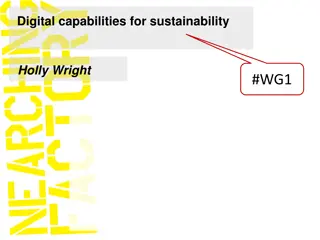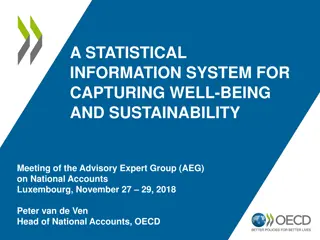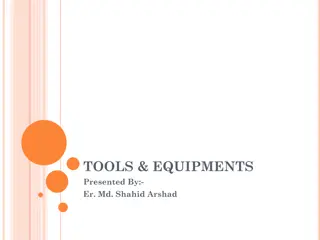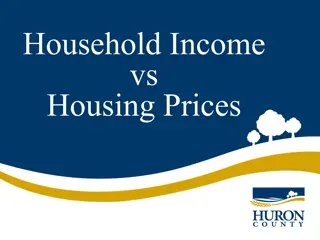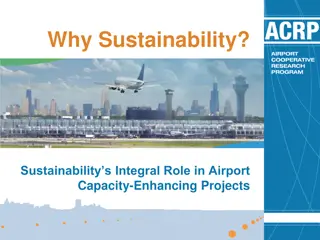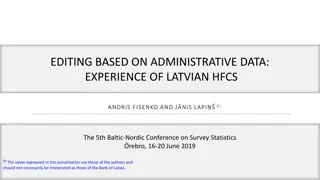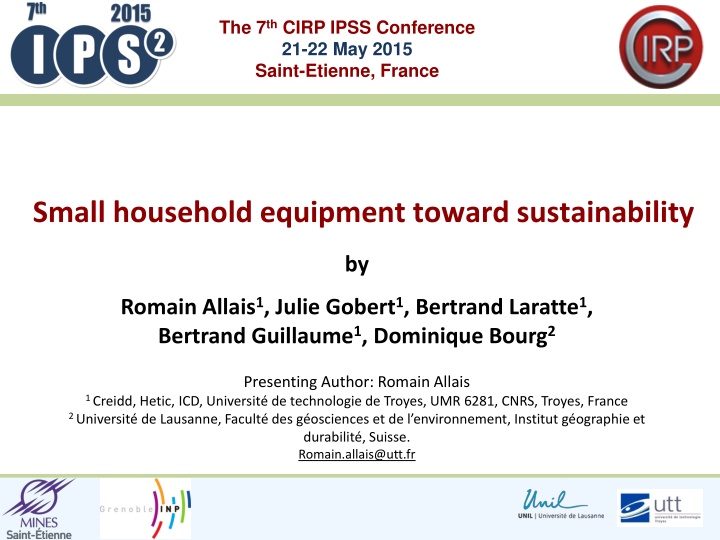
Sustainability Assessment of Small Household Equipment Transition
Explore the sustainable transition of small household equipment for a greener future. Discover challenges, opportunities, and strategies for a functional economy in this in-depth analysis of product sustainability and service structuring.
Download Presentation

Please find below an Image/Link to download the presentation.
The content on the website is provided AS IS for your information and personal use only. It may not be sold, licensed, or shared on other websites without obtaining consent from the author. If you encounter any issues during the download, it is possible that the publisher has removed the file from their server.
You are allowed to download the files provided on this website for personal or commercial use, subject to the condition that they are used lawfully. All files are the property of their respective owners.
The content on the website is provided AS IS for your information and personal use only. It may not be sold, licensed, or shared on other websites without obtaining consent from the author.
E N D
Presentation Transcript
The 7thCIRP IPSS Conference 21-22 May 2015 Saint-Etienne, France Small household equipment toward sustainability by Romain Allais1, Julie Gobert1, Bertrand Laratte1, Bertrand Guillaume1, Dominique Bourg2 Presenting Author: Romain Allais 1 Creidd, Hetic, ICD, Universit de technologie de Troyes, UMR 6281, CNRS, Troyes, France 2 Universit de Lausanne, Facult des g osciences et de l environnement, Institut g ographie et durabilit , Suisse. Romain.allais@utt.fr
Agenda Motivations Objectives Structuration of the service Challenges Methology Discussions and conclusions 2
Small household equipment & functional economy transition Currentchallenges for producers (interviews within SHE producer) Customer demand Production costs Regulations (WEEE) Opportunities for functional economy1 transition Shared use and collaborative consumption (Botsman, Rodger, 2010) Performance economy (Stahel, 2007) Experiment in vivo the partialtransition from product sales to product leasing. 1 Strategy aimed at decouple economic growth and increasing consumption of natural resources (Bourg, Buclet, 2005), (Du Tertre, 2007) 3
Objectives Our mission is to assess and analyse The sustainability of the system {service within its territory} The structuring of the offer among partners The changes induced by the transition. In order to provide Recommendations for products design, partners internal organization or service structuration Develop scenarios for middle and long-term planning 4
Structuring the service Firm specialized in social insertion SHE producer, Project leader Logistics, cleaning and maintenance Industrial 250,000 inhabitant Social neutrality Proximities Product* and packaging production & End-of-life Approved repairer Natural New packaging supplier Network of supermarkets Delivery Anthropized Social space Adapted from (Moine, 2006) Consumers Use SHE producer (EPR) & local authorities Web service supplier WEB service 5 * 28 products, no change in design yet
Structuring the service Firm specialized in social insertion SHE producer, Project leader Logistics, cleaning and maintenance Product* and packaging production & End-of-life Approved repairer New packaging supplier Network of supermarkets Delivery Consumers Use SHE producer (EPR) & local authorities Web service supplier WEB service 6 * 28 products, no change in design yet
Challenges 1/2 Assess the sustainability of the offer Existing studies on PSS can be classified into four groups according to focus evaluation namely economic, environmental, social and customer value [ ] no study has integrated the four values into a single framework 1 Existing multi-criteria assessment of PSS are mainly dedicated to B-to-B market with a quantitative approachwith a business and/or customer perspective2 No unified methodology for sustainability assessment of PSS What about the societal/territorial perspective? 1(Kim et Al., 2015); 2(Abramovici et Al., 2014), (Lindhal et Al., 2014), (Morlock et al;, 2014), (Vogtl nder et al., 2002) ; 7
Challenges 2/2 Analyze and qualify stakeholders evolutions Consumer behavior (who? why? how often?...) Service providers (rational, expectations, competencies ) interactions service structuration community of practices and proximities1 Extrapolate organizational and societal changes Dynamic, multicriteria and transdisciplinary, qualitative and quantitative approach (transition toward sustainability) 1Gobert, J., Allais, R., Construire les proximit s dans un monde global : enjeux territoriaux, organisationnels et soci taux, 8 me journ e de la proximit , Tours, 20-22 mai 2015 8
Toolbox Comparative life cycle assessment (sales VS renting) reference methodology (Nissen, 1997 ), (Valkalma, 2008) frequently used for PSS evaluation (Chan et Al., 2014), (Lindhal et Al., 2014), (Vogtl nder et al., 2002). Challenges for LCA in PSS : identification of functional unit, system boundaries, etc. (Baines et Al., 2007), (Amaya et Al., 2014) Sociology of organizations framework for stakeholder analysis during the experiment (Friedberg, 1993) A scorecard extended to intangible for the management of the whole value chain with a qualitative and quantitative approach (Fustec et Al., 2011) Forecasting & backcasting scenarios for future planning (possible & desirable) (Dreborg, 1996), (Robert, 2000), (Guillaume, 2009) 9
1- Upstream of the experiment Semi-structured interviews with the different partners of the project original motivation and concerns, apprehension and expectations current activities (i.e. internal organization, logistics etc.) LCA is performed all along the experiment, alternative end-of-life scenarios are proposed Logistic model developped to optimize the logistic (frequency, volume) From this first step, influencing factors emerged (i.e. collaboration, interfaces, logistic etc.) 10
Focus on intangibles Extended scorecard1: key assets for this case Human capital (e.g. knowledge, motivation etc.) Information system capital (i.e. ergonomics website, flexibility, etc.) Customer capital (i.e. customer fidelity, satisfaction, etc.) Organizational capital (i.e. share of values, process quality, etc.) Brand capital (i.e. notoriety, confidence, etc.) Territorial capital (i.e. use of local resources, attractiveness, etc.) Natural capital (i.e. resource consumption, emissions, etc.) Analysis and assessment framework for value creation factors 1 Fustec et Al., 2011, R f rentiel fran ais de mesure de la valeur extra- financi re et financi re du capital immat riel des entreprises. 11
2- During the experiment Evolution and influence of identified key factors Interviews are conducted again (+3, +6 months) to identify the changes in the perceptions of users and providers of the service. LCA and logistic models are implemented with data from the web application (i.e. number and types of devices rented, default in the delivery, quality issues etc.). Extended scorecard is implemented and improved Iterative improvement of the service. 12
3- Downstream of the experiment Recommendations product and service design comparative LCA, end-of-life, logistics optimization, quality defaults bibliography design for recycling, remanufacturing, upcycling qualitative assessment of the interfaces (web and delivery) organizational challenges and issues (management, communication, value share) impact on customers behaviour (individual and collective interviews) Scenarios are developed for middle and long term planning based on key factors Special attention is given to the transposability of the business model to another geographic area and/or product-services 13
Discussion on methodology Economic dimension is not included in our study perimeter Perimeter and scale LCA concerns only one device (on 28), and considers every steps of the product life cycle from cradle to grave. Sociological study put an emphasis on the interactions with a specific focus on the interface Ecodesign of PSS : specific VS generic? Contextualization is crucial for the sociological assessment (specific generic) LCA and design studies are generic (generic specific) Complementary or contradictory approaches? 14
Conclusions This action research has the potential to contribute to foundation for integrated framework for PSS analysis and assessment the understanding of success or failure factors of servitization regarding engineering, organizational and sociological issues. influence factors on customers behaviour incremental improvement on impact assessment methodology dedicated to PSS. measure externalities of PSS with a larger scope (societal perspective) scenarios for future changes with multiple perspectives The first phase is done, second will come soon (sept. 2015) 15
Thanks for your attention romain.allais@utt.fr This project is funded by the French Environment and Energy Management Agency (ADEME). 16

